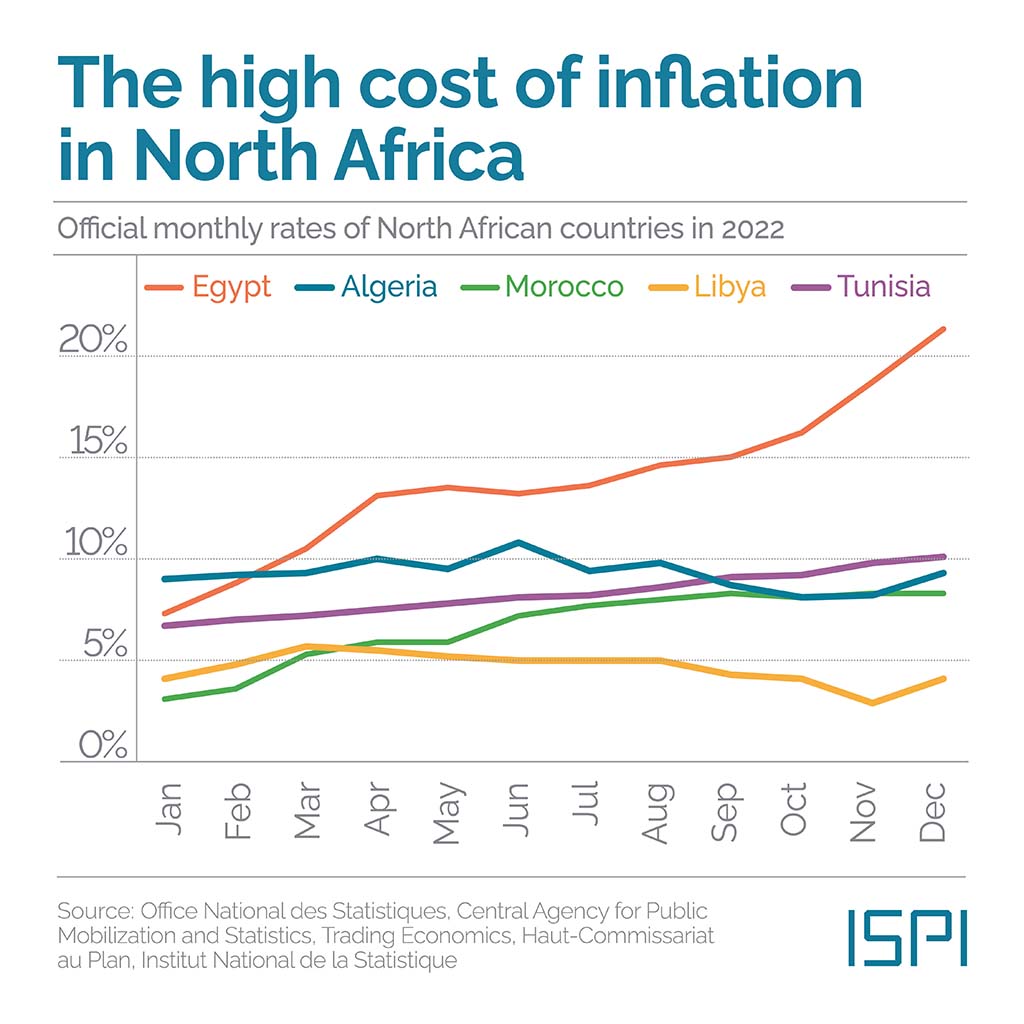Report on the “Shades of Bias” Framework for Advancing Sustainable Development Goals in Social Work
Introduction: A Framework for Actionable Change
The social work profession has articulated a commitment to anti-discriminatory, anti-oppressive, and anti-racist practice. However, a significant gap persists between this rhetoric and the implementation of tangible reforms. The “Shades of Bias” framework has been developed to bridge this divide, moving beyond performative actions towards meaningful change and person-centred support. This initiative directly supports the achievement of several United Nations Sustainable Development Goals (SDGs) by fostering equitable, just, and inclusive professional environments.
Framework Objectives and Alignment with Sustainable Development Goals (SDGs)
Core Mission and Process
Shades of Bias is a structured process designed to facilitate critical reflection on how discrimination, oppression, and racism manifest within the social work sector and beyond. It provides a psychologically safe methodology for documenting, analysing, and addressing instances of bias through a three-stage process:
- Reveal: Documenting the event or issue.
- Reflect: Analysing its dynamics and impact.
- Repair: Facilitating learning, growth, and accountability.
Contribution to Global Goals
The framework is fundamentally aligned with the 2030 Agenda for Sustainable Development, contributing to the following goals:
- SDG 10 (Reduced Inequalities): The primary objective of Shades of Bias is to identify and dismantle systemic patterns of discrimination based on race, gender, and other characteristics, thereby promoting equity and social justice.
- SDG 16 (Peace, Justice and Strong Institutions): By providing a transparent, non-punitive mechanism for accountability and restorative learning, the framework helps build more effective, accountable, and inclusive institutions within the social care sector.
- SDG 3 (Good Health and Well-being): It offers a therapeutic and structured tool for victims and survivors to process their experiences, promoting mental well-being and creating psychologically safer workplaces.
- SDG 8 (Decent Work and Economic Growth): The framework fosters inclusive and safe work environments by addressing bias in recruitment, progression, and workplace culture, ensuring decent work for all social work professionals.
- SDG 17 (Partnerships for the Goals): Its development was a collaborative effort, co-produced by a partnership of diverse professional bodies and practitioners, including the British Association of Social Workers (BASW) England, the Black and Ethnic Minority Professionals Symposium (BPS), and others.
Methodology and Application
Target Users
The framework is designed for use by multiple parties involved in an incident of bias, promoting a holistic and restorative approach:
- Victims/survivors of discrimination, to articulate their experiences.
- Witnesses and observers, to reflect on incidents and contribute to ethical practice.
- Those responsible for bias, to engage in non-punitive reflection and personal growth.
The Case Study Template Structure
Shades of Bias utilises a standardised template to guide reflection and documentation. The template is divided into the following sections:
- Case study title
- Background and context
- Nature of the incident
- How was the situation handled?
- Reflection and learning
- Reflection and learning (for the person/people responsible for bias)
Practical Implementation
The framework is an adaptable tool intended for use across policy, practice, and education to strengthen institutional integrity, in line with SDG 16.
- In Policy: To inform consultation responses and track systemic patterns of discrimination, providing data to drive evidence-based policy change.
- In Practice: To serve as a supervision tool, a continuing professional development (CPD) mechanism, and a reflective journal for practitioners.
- In Education: To support students and educators in exploring concepts of bias, privilege, and oppression in a meaningful and sensitive manner.
Foundational Principles and Development
Collaborative and Responsive Origins
The development of Shades of Bias was a co-produced response to concerns raised by Black and Global Majority members of BASW England. It addresses documented issues such as racism faced by students on placements, bias in professional assessments, and institutional barriers to recruitment and progression. This origin reflects a commitment to reducing inequalities (SDG 10) through partnership (SDG 17).
Grounding in Professional Standards
The framework is informed by and reinforces established professional and ethical standards, which are crucial for building strong institutions (SDG 16). These include:
- BASW’s Code of Ethics
- The Professional Capabilities Framework (PCF)
- Standards for Employers of Social Workers in England
- Social Work England’s professional standards
- The Social Care Workforce Race and Equality Standard (SC-WRES)
Fostering Accountability and Organizational Change
Supporting Individuals Responsible for Bias
A key innovation of the framework is its dedicated section for individuals who have engaged in discriminatory actions. This non-punitive, structured approach encourages them to:
- Recognise and understand personal biases.
- Acknowledge the harm caused.
- Align their practice with professional ethics and regulatory expectations.
- Contribute to a culture of transformative change and accountability.
Driving Systemic Transformation
Shades of Bias is positioned not merely as a resource but as a philosophy for systemic change. By encouraging internal reflection, it aims to foster a professional culture of honesty, humility, and integrity. If widely adopted, the framework has the potential to humanise systems, reimagine accountability, and embed the principles of social justice and reduced inequality (SDG 10) into the core of social work. It asserts that when bias is revealed and reflection is authentic, repair becomes possible, leading to stronger, more just institutions (SDG 16).
Analysis of SDGs in the Article
1. Which SDGs are addressed or connected to the issues highlighted in the article?
The article on the “Shades of Bias” framework addresses several interconnected Sustainable Development Goals by focusing on tackling systemic discrimination, promoting equality, and strengthening institutional accountability within the social work profession.
-
SDG 10: Reduced Inequalities
This is the most central SDG to the article. The “Shades of Bias” framework is explicitly designed to address and document instances of discrimination, oppression, and racism. The article highlights concerns from “Black and Global Majority members” and provides a case study on racial bias in recruitment, directly tackling the issue of inequality based on race and ethnicity.
-
SDG 16: Peace, Justice and Strong Institutions
The article calls for moving beyond “performative actions” to achieve “tangible reforms” in social work. The framework aims to build more effective, accountable, and inclusive institutions by providing a structured process for documenting bias, promoting restorative learning, and informing “organisational change.” It seeks to fill the gap where “formal channels may be unresponsive,” thereby strengthening institutional justice.
-
SDG 8: Decent Work and Economic Growth
The issues of “institutional racism in recruitment, progression, and workplace culture” directly relate to this goal. The article describes how qualified candidates are overlooked due to bias, preventing equal opportunity for promotion and decent work. By aiming to create psychologically safe and non-discriminatory workplaces, the framework contributes to ensuring safe and fair working environments for all.
-
SDG 4: Quality Education
The article notes that the framework can be used “in education, [to] support students and educators to explore bias meaningfully and sensitively.” It also mentions that “students facing racism during placements and academic experiences” was a key concern that led to the framework’s development. This connects to providing quality, inclusive, and equitable education and promoting lifelong learning opportunities, such as anti-racism training for professionals.
2. What specific targets under those SDGs can be identified based on the article’s content?
Based on the issues discussed, several specific SDG targets can be identified:
-
SDG 10: Reduced Inequalities
- Target 10.2: “By 2030, empower and promote the social, economic and political inclusion of all, irrespective of… race, ethnicity… or other status.” The article’s entire purpose is to combat the exclusion of “Black and Global Majority members” from opportunities, as seen in the recruitment example where a Black candidate was excluded from a senior role due to bias.
- Target 10.3: “Ensure equal opportunity and reduce inequalities of outcome, including by eliminating discriminatory… practices.” The “Shades of Bias” framework is a tool designed to identify, document, and ultimately eliminate the discriminatory practices that lead to unequal outcomes in hiring and career progression within social work.
-
SDG 16: Peace, Justice and Strong Institutions
- Target 16.6: “Develop effective, accountable and transparent institutions at all levels.” The article criticizes the “lack of accountability in addressing racism” and presents the framework as a mechanism to make social work institutions more accountable by documenting injustices and tracking “harmful systemic patterns.”
- Target 16.b: “Promote and enforce non-discriminatory laws and policies for sustainable development.” While not a law itself, the framework is designed to help enforce existing professional standards and codes of ethics that mandate non-discriminatory practice, such as the BASW’s code of ethics and Social Work England’s professional standards.
-
SDG 8: Decent Work and Economic Growth
- Target 8.5: “By 2030, achieve full and productive employment and decent work for all… and equal pay for work of equal value.” The article addresses barriers to this target by highlighting “institutional racism in recruitment, progression, and workplace culture,” which prevents qualified individuals from securing promotions and achieving their full productive potential.
- Target 8.8: “Protect labour rights and promote safe and secure working environments for all workers.” The framework aims to create “psychologically safe spaces” and move away from discriminatory workplace cultures, which contributes directly to a safer and more secure working environment for social workers from minority backgrounds.
-
SDG 4: Quality Education
- Target 4.7: “By 2030, ensure that all learners acquire the knowledge and skills needed to promote sustainable development, including… human rights… promotion of a culture of peace and non-violence, global citizenship and appreciation of cultural diversity.” The framework serves as an educational tool for students and a professional development resource for practitioners to gain a deeper understanding of bias, cultural competence, and anti-racist practice. The mention of “anti-racism training” is a direct application of this target.
3. Are there any indicators mentioned or implied in the article that can be used to measure progress towards the identified targets?
The article implies several qualitative and quantitative indicators that could measure progress:
-
Indicators for SDG 10 (Reduced Inequalities)
- Proportion of individuals reporting discrimination: The framework is a tool to “document injustices and validate lived experiences,” which directly relates to indicator 10.3.1 (“Proportion of population reporting having personally felt discriminated against”). The number and nature of case studies collected could serve as a measure.
- Representation in senior roles: The article explicitly points to a “lack of diversity at senior levels” with “minimal representation of Black professionals.” An increase in the proportion of senior practitioners and managers from Black and Global Majority backgrounds would be a key indicator of progress.
-
Indicators for SDG 16 (Peace, Justice and Strong Institutions)
- Adoption of accountability frameworks: A direct indicator would be the number of social work teams, local authorities, and educational institutions that adopt the “Shades of Bias” framework, as the article calls for it to “become the standardised framework.”
- Policy and practice changes: The article states the framework can be used to “inform organisational change.” An indicator would be the number of documented changes to HR processes, supervision policies, or recruitment guidelines that are made based on the patterns identified through the framework.
-
Indicators for SDG 8 (Decent Work and Economic Growth)
- Equity in recruitment and promotion: Progress could be measured by tracking recruitment and promotion rates across different ethnic groups within social work organisations to ensure that disparities are reduced over time. The case study highlights a clear failure in this area.
-
Indicators for SDG 4 (Quality Education)
- Integration into curriculum and training: An indicator would be the number of social work education programs and continuing professional development (CPD) modules that formally incorporate the “Shades of Bias” framework or similar anti-racism training. The article mentions its use “in education” and as a “CPD mechanism.”
4. Table of SDGs, Targets, and Indicators
| SDGs | Targets | Indicators (Identified or Implied in the Article) |
|---|---|---|
| SDG 10: Reduced Inequalities |
|
|
| SDG 16: Peace, Justice and Strong Institutions |
|
|
| SDG 8: Decent Work and Economic Growth |
|
|
| SDG 4: Quality Education |
|
|
Source: communitycare.co.uk







